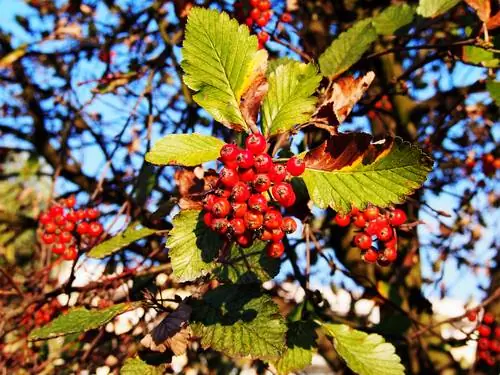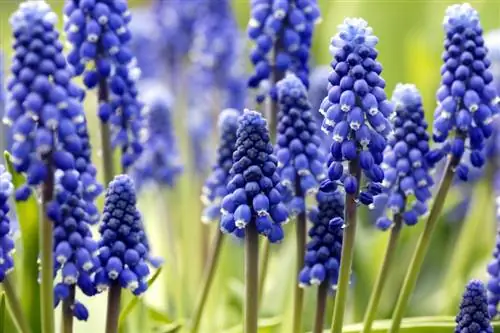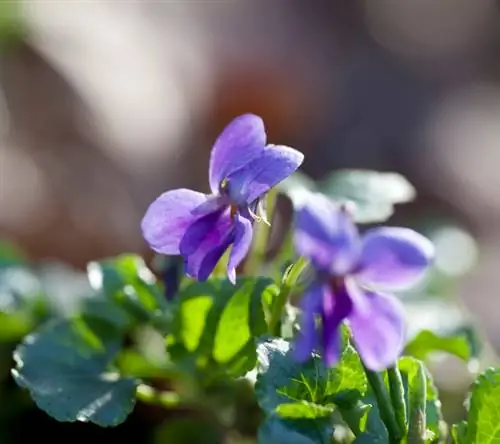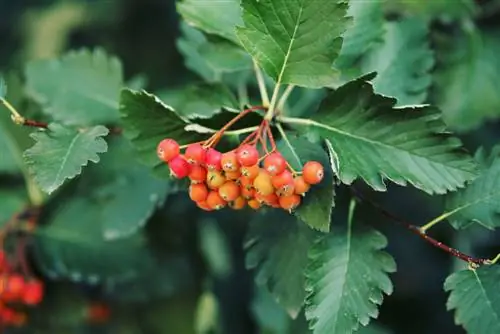- Author admin [email protected].
- Public 2023-12-16 16:46.
- Last modified 2025-01-23 11:21.
The Swedish whitebeam is closely related to the rowanberry. In contrast to this, however, it is not poisonous and is therefore a sensible alternative if small children or pets often play in your garden. Would you like to learn more interesting things about the Swedish whitebeam that might be relevant for planting? Then you've come to the right place.

What is the Swedish whitebeam?
The Swedish whitebeam (Sorbus intermedia) is a deciduous tree from the rose family that occurs in Central and Northern Europe. It reaches heights of 10-18 m, prefers sunny to partially shaded locations and has egg-shaped, dark green leaves and white, fragrant flowers. The edible, orange fruits are popular with birds.
General
- German name: Swedish whitebeam
- Botanical name: Sorbus intermedia
- other names: Swedish rowanberry, oxelberry
- Tree family: Rosaceae
- Tree type: deciduous tree
- Root type: Heartroot
- summergreen
Origin and location requirements
Occurrence and use
- Distribution: throughout Central Europe
- Use: in parks, gardens and roadsides
Did you know that the Swedish whitebeam only grows naturally in northern regions (Scandinavia, the northern B altics and northern Germany)? It has now adapted to the climatic conditions throughout Europe and is now also cultivated as an ornamental tree outside of these countries.
Location
- Light requirements: sunny to partially shaded
- Frost hardness: up to -28°C
- Dry, stony meadows, in deciduous forests, in rocky landscapes
Substrate
- sandy
- strongly loamy
- pH value: neutral to alkaline
Habitus
- maximum height: 10-18 m
- Growth habit: branched
leaves
- Shape: egg-shaped
- Leaf edge: irregularly sawn, lobed
- Leaf top: dark green, shiny
- Underside of leaf: slightly felty
- Leaf position: alternate
- Leaf length: up to 10 cm
- Autumn color: dark yellow to red
Bloom
- Flowering period: May to June
- Flower color: white
- intense scent
- Flower shape: umbel
- Size: 10-12 mm
- Gender: monoecious, hermaphroditic
- Type of reproduction: Animal pollination
Fruit
- Size: comparable to a pea
- Type of fruit: small apple fruits
- Color: orange
- Fruit ripening: September to October
- poisonous?: edible, with a floury-sweet taste
- Use: as jelly, juice or jam
Tip
If you like watching birds, we highly recommend planting a Swedish whitebeam in your own garden. The bright orange fruits attract numerous different species.
Wood
- Color of branches: reddish brown
- Buds: thick, pointed, also reddish brown
- Bark: grey-black and smooth
- Uses: cones, limb rules






